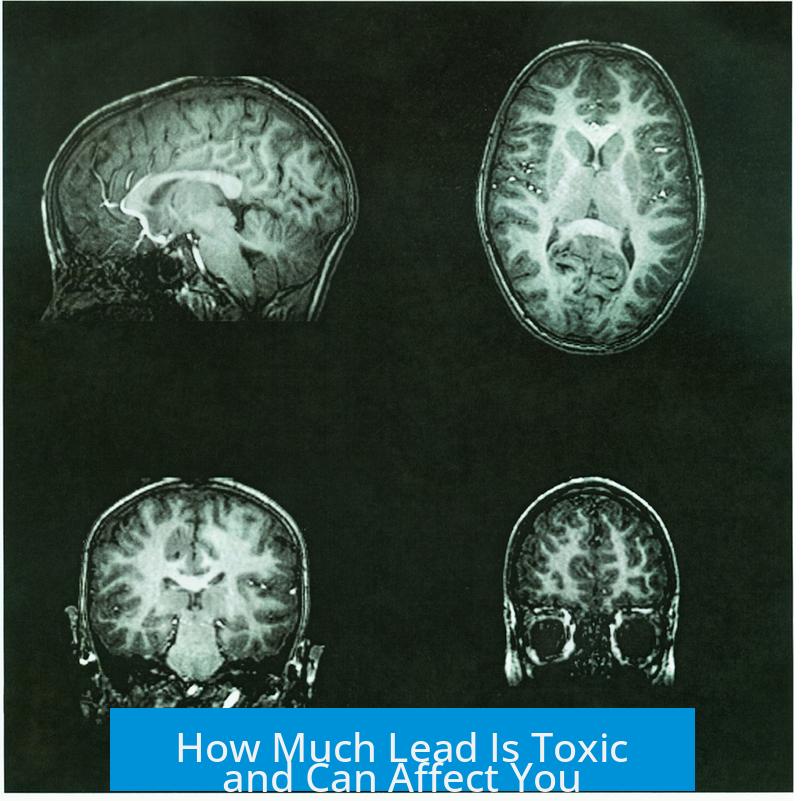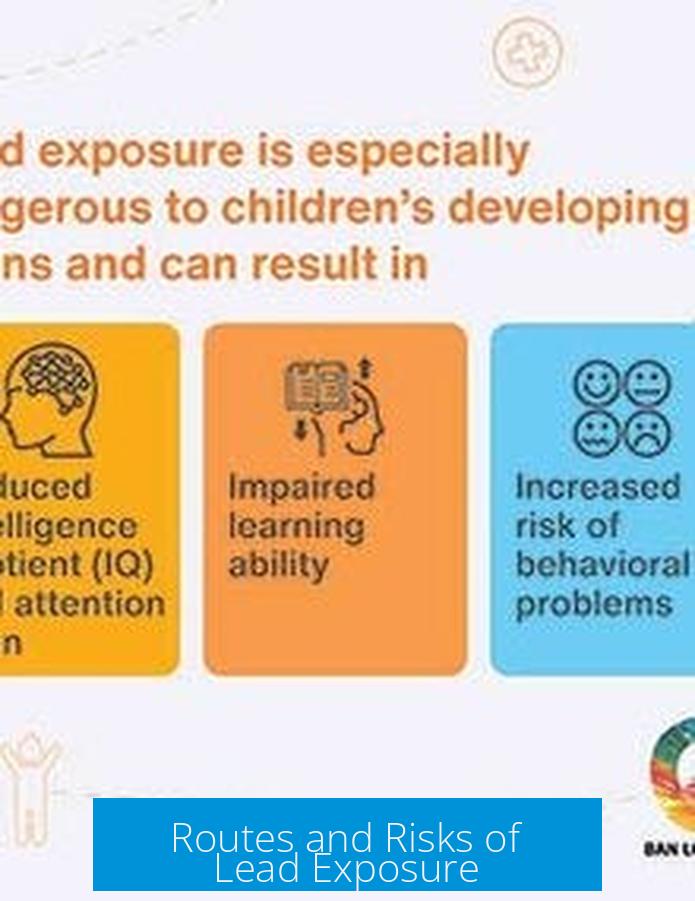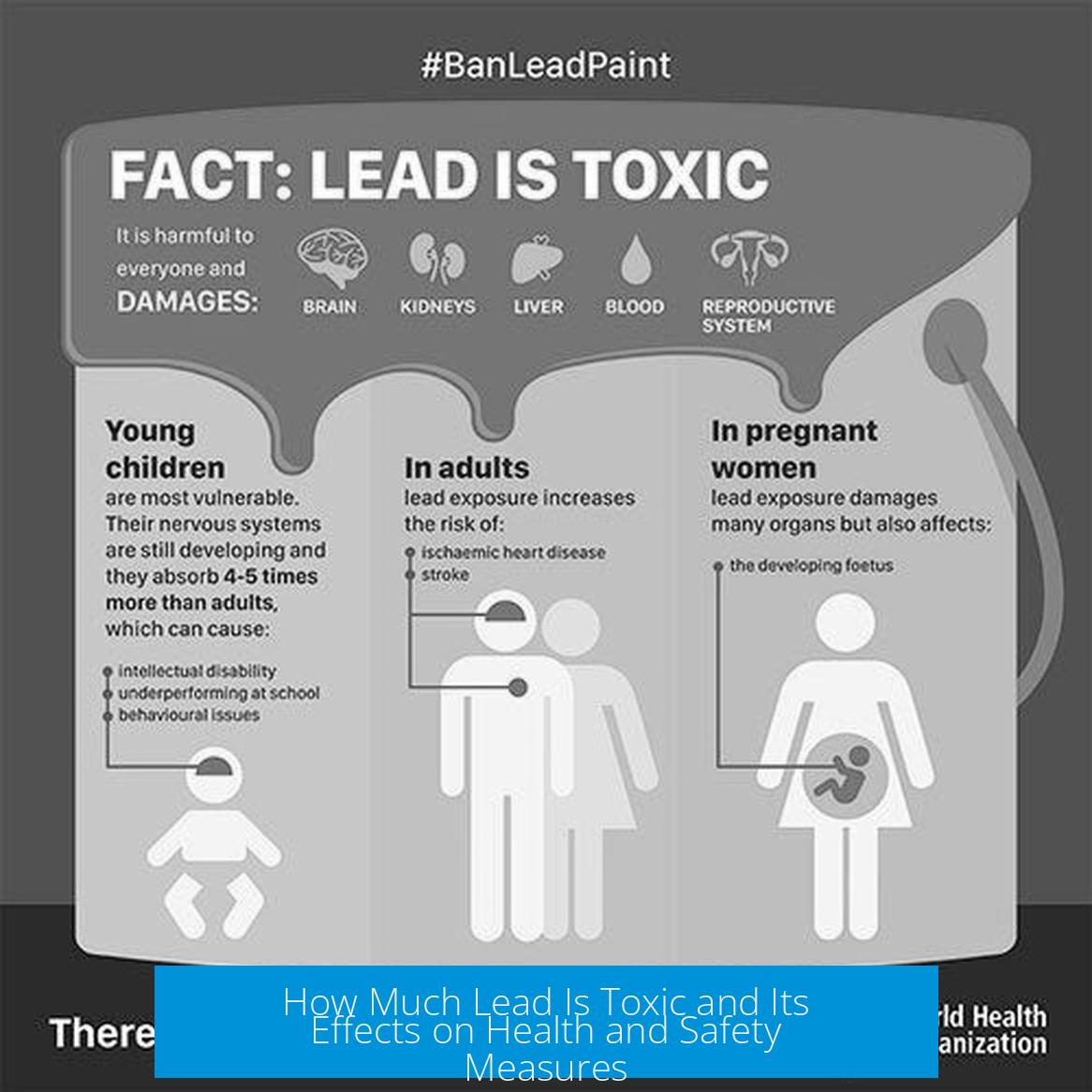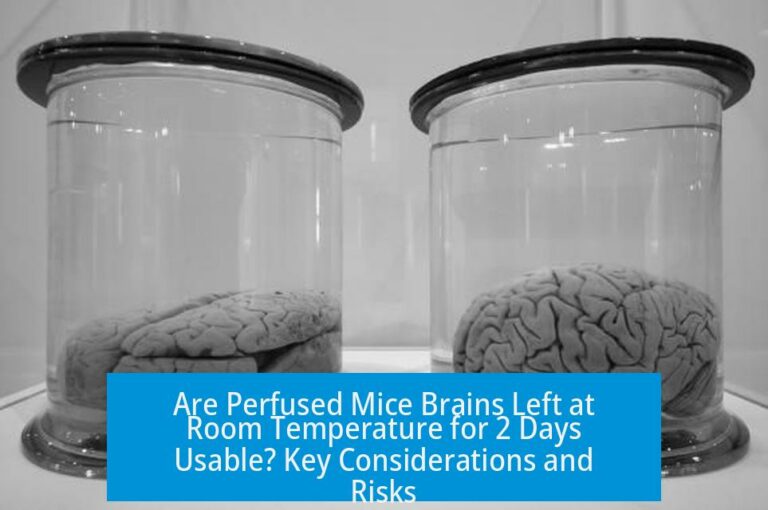How Much Lead Is Toxic and Can Affect You?

Lead becomes toxic based on its chemical form, exposure route, and concentration. Blood lead levels above 5 micrograms per liter (μg/L) are reportable, with symptoms often emerging near 10 μg/L. Children face more severe risks due to developing nervous systems, while adults are less susceptible. Elemental lead contact is usually safe, but inhaling lead dust poses significant health risks.
Understanding Lead and Its Forms
Lead exists in different chemical forms that influence its toxicity and absorbability. Elemental lead (Pb(0)) is metallic and relatively inert under normal conditions. For example, lead fishing weights comprising elemental lead rarely cause poisoning because human skin acts as an effective barrier. The skin blocks dissolved Pb(II) ions from entering the body.
Pb(II) ions are more bioavailable but still have limited absorption through intact skin. Environmental lead exposure often involves lead ions or particles. Organo-lead compounds, though rare and usually nonexistent in nature, can cross the blood-brain barrier and are notably toxic. These compounds are mostly historical concerns from specialized industrial products.
Industrial activities such as smelting and combustion release lead into the environment. Smelters or old fuel containing lead acetate represent particularly hazardous exposure sources due to lead’s low partial pressure, enhancing its dispersal in air.
Blood Lead Levels and Toxicity Thresholds
Health authorities use blood lead levels (BLL) to assess toxicity and risk. A BLL above 5 μg/L prompts reporting and monitoring. Symptoms tend to begin around 10 μg/L. The levels documented in high-exposure environments, like mining towns with smelters, often slightly exceed 5 μg/L, indicating low but concerning exposure.
| Blood Lead Level (BLL) | Health Status | Comments |
|---|---|---|
| Below 5 μg/L | Generally safe | Typical in most populations with minimal lead exposure |
| 5 μg/L or higher | Reportable exposure | Requires monitoring and investigation |
| 10 μg/L or higher | Symptomatic toxicity risk | Possible cognitive or neurological symptoms |
Children are especially vulnerable to lead exposure because their nervous systems are still developing. Even low levels can impair cognition and learning. Adults without anemia or other vulnerabilities usually tolerate low exposure better, experiencing minimal or no symptomatic effects.
Routes and Risks of Lead Exposure

Lead ingestion, inhalation, and dermal contact vary greatly in risk. Direct skin contact with intact skin generally poses no toxicity risk due to poor skin penetration by lead ions.
- Skin Contact: Elemental lead or embedded particles under the skin often do not cause symptoms, as the body limits absorption.
- Inhalation: Breathing lead dust or fumes, particularly during sanding, renovation, or industrial work, significantly increases risk. Without protective filtration masks, symptoms can include brain fog, vocabulary loss, and cognitive decline.
- Ingestion: Lead-contaminated products or deteriorated paint chips are dangerous, especially to children who may ingest paint flakes or contaminated dust.
- Plumbing Systems: While older lead pipes existed, the bioavailability of lead from plumbing has dramatically decreased due to regulatory changes and mineral coatings forming inside pipes.
Symptoms and Effects of Lead Toxicity
Lead toxicity mainly affects the nervous system, especially in children. Symptoms include:
- Cognitive impairment
- Learning difficulties
- Brain fog and memory loss
- Loss of vocabulary or difficulty in thinking
Chronic exposure can cause irreversible brain damage. However, some research suggests potential reversal or mitigation through supplements like flavonoids, alpha-lipoic acid, and natural chelating agents such as spirulina and chlorella. Enhancing blood flow and promoting neural growth may support recovery.
Practical Safety Measures to Minimize Lead Exposure
Most everyday exposure to lead is low and unlikely to cause toxicity due to strict regulations and product labeling. To minimize risk:
- Use appropriate filtration masks when sanding or working in areas with lead dust.
- Avoid peeling or chipping old paint, especially in older homes.
- Do not ingest products or substances with unknown lead content.
- Ensure children do not ingest paint chips, dust, or soil contaminated with lead.
- Be aware of local environmental lead sources such as smelters.
Psychological stress from fear of lead exposure can also affect health. Practices like meditation, therapy, adequate sleep, and mindfulness help reduce anxiety and improve well-being.
Is 1.1 mg/kg Lead Content in Products Toxic?
The question of whether 1.1 mg/kg lead concentration in an ingested product is harmful lacks a direct answer without further context. Regulatory guidelines vary based on product type and consumption levels. In many countries, allowable lead limits in food or consumer products are far below 1 mg/kg to ensure safety. Even low doses accumulate in the body over time, so minimal exposure is the goal, particularly for children.
Summary of Key Points
- Lead toxicity depends on chemical form, exposure level, and entry route to the body.
- Blood lead levels above 5 μg/L warrant monitoring; symptoms may appear near 10 μg/L.
- Children face higher risks from lead exposure than adults.
- Direct skin contact with elemental lead usually poses no risk due to skin’s protective barrier.
- Inhaling lead dust is a major hazard; filtration masks are essential during exposure.
- Lead in plumbing today is generally non-bioavailable due to regulations and pipe coatings.
- Symptoms of toxicity include cognitive deficits and neurological issues.
- Supplements and natural chelators may support recovery but cannot guarantee reversal.
- 1.1 mg/kg lead in ingested products may be high; limits depend on product type and regulations.
- Preventive measures and reducing anxiety about lead exposure are crucial for health.




Leave a Comment